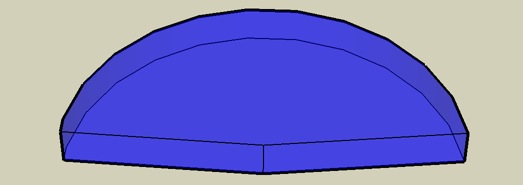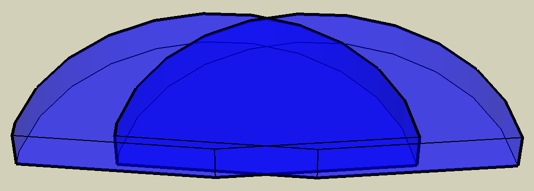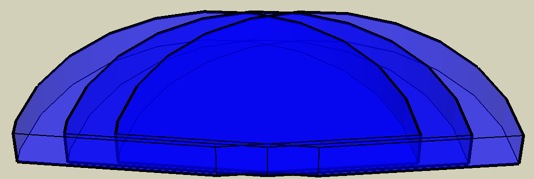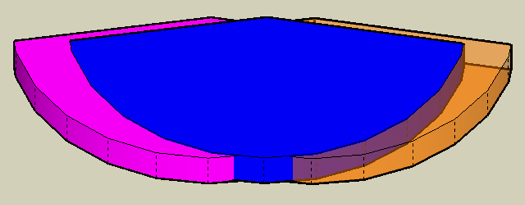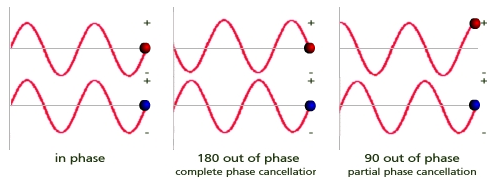Dual Mono
Introduction
This article pertains to Dual Mono with all L1 systems.
L1 Systems
The L1 systems have extremely wide horizontal dispersion. As a result, running multiple L1 systems in the same sound field may result in overlap. The comments below are applicable in that context.
Non-L1 Systems
The F1 Model 812 Flexible Array Loudspeaker and S1 Pro System systems have narrower horizontal dispersion. If you space those systems apart or aim them to avoid overlap, this article is not applicable.
Dual Mono
This is amplifying the same sound source through two separate loudspeakers.
Hilmar-at-Bose wrote:
- Dual mono (with the L1 systems) is usually not a good idea, if you have more than one performer. With more than one performer/source it's in my opinion always preferable to separate the sources (i.e. one source per L1). The spatial separation and precise localization help more with clarity much more than the added gain.
- For a single performer/single source, it's not quite so clear cut. One will be more accurate (i.e. sound is clearly located at the performer's position, more consistent spectrum) and two will sound wider and more spacious. In the end, that is an artistic decision, depending on which one is closer to your artistic intent.
- -- Source Dual mono is usually not a good idea
Gain Before Feedback
To optimize gain before feedback, each microphone should be heard through only one L1 .
Feedback occurs when the sound from the loudspeaker (or loudspeakers if a microphone is connected to more than one) is louder at the microphone than the sound of the voice. As you increase the number of loudspeakers a microphone is connected to (e.g., dual mono), you increase the possible paths for feedback and lower the gain before feedback.
Benefits of Two L1 Systems
- Introduction
- This discussion pertains to using two L1 systems with the same sound source (Dual Mono). For a discussion about stereo see Stereo / Mono / Distributed Systems
- What is the benefit of using two L1 systems over one?
- You will get more coverage (based on the distance between the L1 systems) and an increase in loudness (but not double the loudness)[1] .
- How much more coverage will I get?
- The increased coverage will be the result of the distance between the two systems. For example, if you place them twenty feet apart in the horizontal plane, you will get twenty feet more coverage from side to side. You will also increase the overall sound level by +3 dB. Your projection straight ahead may improve but that is harder to predict as the distances increases.
- How much gain do you get when you run two L1 systems with the same source?
- Short answer: +3 dB in practice
- +6 dB in theory
The most you can ever get from putting two sources fed by the same signal together is +6 dB. The reason?
- Sound waves add in space through the principle of superposition. If the waves from two sources perfectly add, you get twice the amplitude, which is +6 dB.
- To get the full +6 dB the two sources have to be spaced very closely together relative to a wavelength of sound. at 50 Hz, where the wavelength of sound is about 20' (about 7 meters) that's pretty easy to do. Massing your bass modules is done for this reason -- to get the 6 dB per doubling of bass module systems. But at 1,000 Hz, where the wavelengths are 12 inches (about 30 cm) you just can't do get L1 speakers close enough. As a result, you get something less than 6 dB because at some angles instead of the sound waves constructively adding they will destructively cancel (one will be partly or completely out of phase with the other).
- +3 dB in practice
Once you separate the sources by several or more wavelengths, the summations and cancellations are so numerous and so complex that we say the two sources are essentially uncorrelated (not strictly true, but for the purposes of this argument, a very close approximation.) When two sources are uncorrelated the only thing you can count on is that the total amount of acoustic power going into the room will be doubled. Doubling the power is +3 dB.
- Is +3 dB twice as loud?
- No
- Doubling the power (+3 dB)is not twice as loud.
- A non-exact rule-of-thumb is that every 10 dB increase is a doubling of perceived loudness. [1]
- Takeaways
- Put bass modules together if you can because they'll give you an honest 6 dB per doubling of bass modules/
- If you are sending a mono or stereo signal to spaced L1 systems, try to space them 20 feet (7 meters) or more if you can because this will minimize any audible cancellations.
Two L1 Systems Overlapping
Here are some sketches for discussion purposes. The sound field does not stop abruptly, as might be interpreted by viewing these diagrams. It should continue, fading off gradually, well beyond what is shown here.
These are extremely conservative, and your real-life performance will exceed what is suggested here. We are looking at the relative performance between one L1®. and two.
The view is from behind the wall behind the L1 systems.
Single L1® mono
Two L1®s twenty feet apart — Dual Mono
The darker blue area represents the area where the two sound fields overlap.
Notes:
- Running two L1®s does not project farther forward than one.
- Dual Mono is not recommended.
When you run stereo instead of dual-mono the stereo "sweet-spot" will be extremely wide. You don't have to be between the loudspeakers to hear both Left and Right channels.
Two L1®s with the original single L1®s field superimposed
The dark blue area shows the sound field of the original L1™. The lighter area shows the extra coverage you get by having two L1™s 20 feet apart as compared to a single L1™
The extra coverage you get with two L1®s spaced 20 feet apart, is about 10 feet on either side of the sound field of a single L1®s.
- The view from the other side[/b]
(Still very conservative projections)
Blue is the coverage with one L1™. Purple and Orange is the extra coverage that you might get with two L1™s 20 feet apart.
Note: The sound field does not stop abruptly, as might be interpreted by viewing these diagrams. It should continue, fading off gradually, well beyond what is shown here. The purpose of these diagrams is to consider the relative advantages of having two L1®s in dual mono mode compared to a single L1®.
Multiple Source Interference
Phase (cancellation, interference)
Minimum Distance Running Two L1®s in Dual Mono
Phase cancellation can be an issue if you are running Dual Mono (two L1®s from the same mono source). This can be an issue when two or more L1®s are fed the same signal.
The minimum recommended distance for two L1®s running the same signal is 20-50 feet.
Only when fed the same signal, "Interference between line arrays would be more severe [than for non-line-array speakers]. In fact, the current Bose design rules for installing MA12 line arrays recommend ... a spacing between line arrays of between 6 and 15 meters! (20-50 feet)" The same applies to the L1. - Chris-at-Bose [2] (Clarifications added by the author of the quote.)
Note: During a conversation with Chris-at-Bose, he confirmed that the recommendations above are the same for the L1 Model II. ST 15:13, 30 August 2007 (GMT-7)
Theoretical Discussion
Running two inputs 180° out-of-phase puts the peaks and valleys of the sine wave so that they null each other out when summed (see the middle picture below). This has a tendency to cancel out both inputs, and is quite pronounced in the "far" field, but negligible in the "near" field. Normally phase cancellation is undesirable, but when you know what you want (and in this case, what you don't want) then you do it deliberately.
Phase cancellation occurs when two signals of the same frequency are out of phase with each other resulting in either a boost or cut in the overall level of the combined signal.
-- Phase at the Zen Audio Project
If you are suffering from some or all of these, you could be experiencing Phase Interference
- "Hot" and "cold" spots in the audience area
- Tonal coloration
- Poor speech intelligibility
- Lack of music clarity
- Poor gain-before-feedback
- Poor imaging
See: There is an interesting visual presentation of how phase cancellation occurs with two sound sources.
Practical Realities of Phase Interference
See: Phase
Related reading
- Can I Use It as a PA? (Cliff-at-Bose talks about Dual Mono)
- Live or PreRecorded / Stereo and *-Mono Chris Ickler's report on listening tests with four L1®s and multiple B1 Bass modules.
- Stereo / Mono / Distributed Systems Ken-at-Bose


